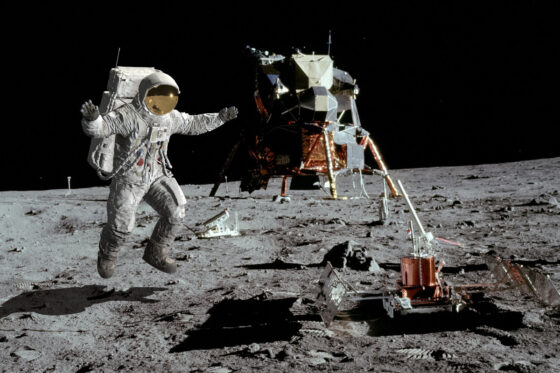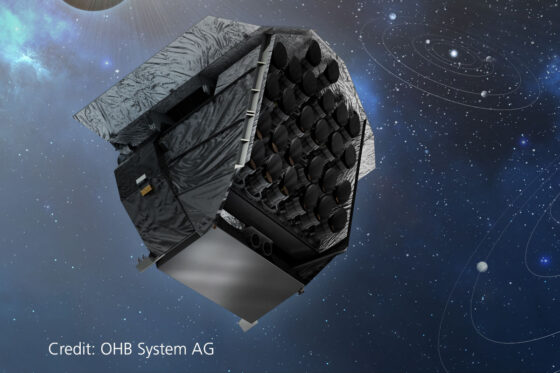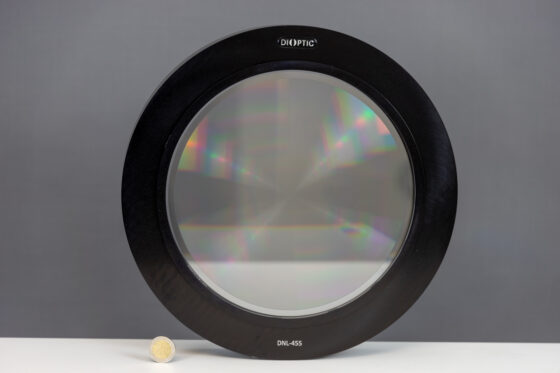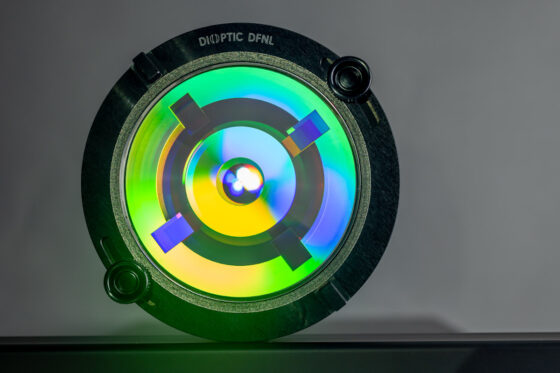Starting in 2026, ESA’s PLATO mission will search for Earth-like planets outside our solar system. In the process, 26 telescopes will collect spectral data from stars, which in turn will allow conclusions to be drawn about such exoplanets. CGHs from DIOPTIC will be used to check and adjust the convex asphere of the telescopes with high precision.

DIOPTIC as a technological enabler
The fact that small steps can be a giant leap for mankind was already more than just a radio message during the first moon landing. Today, the goals of current space missions sound no less promising. Space exploration is now reaching dimensions far beyond our imagination. The technologies that make this possible are becoming ever more precise and powerful. With the development of so-called computer-generated holograms (CGHs), DIOPTIC is making a significant contribution.

Custom CGHs for telescopes
DIOPTIC has already developed a multi-zone CGH for the production of the telescope lens of the ESA Euclid Space Mission in the recent past, with which the five lenses of the telescope could be realized with a position accuracy of better than 2.5µm and a tilt of less than 10 angular seconds. The ESA mission PLATO (Planetary Transits and Oscillations of Stars), in turn, will open a new chapter in the search for extrasolar planets starting in 2026 – and ignites the next stage technologically. DIOPTIC is once again on board in the preparations for this pioneering mission.

Optical layout and parameters of the CGH
As part of the PLATO mission, 26 telescopes collect spectral data from stars that are modified by the transit of exoplanets and in turn allow conclusions to be drawn about their properties. The telescopes are manufactured using DIOPTIC’s patented Diffractive Zero Lensing with Fizeau Reference Lensing (DFNL), which was developed specifically for interferometric testing and the alignment of aspheres. As far as the size of the CGH is concerned, the specialists from Weinheim go one step further: In order to be able to test the convex aspheres of the telescopes, this particular CGH has a size of 220 mm in diameter.

Sole supplier of CGHs of this size
“I don’t know of any other supplier in the world that can produce CGHs of this size,” reports Managing Director Jean-Michel Asfour proudly. “Furthermore, by integrating the fizeau reference surface, our CGH design allows flat or spherical surfaces to be tested with the same mechanical setup.” The fact that DIOPTIC goes the decisive step further in such demanding customer projects is part of the company’s self-image. The technological advances that are made possible as a result are always astonishing: in small and in unimaginably large dimensions.
Contact Us:
Dr. Frank Weidner
Division Head DOE & CGH
phone: +49 6201 65040 00
cgh@dioptic.de